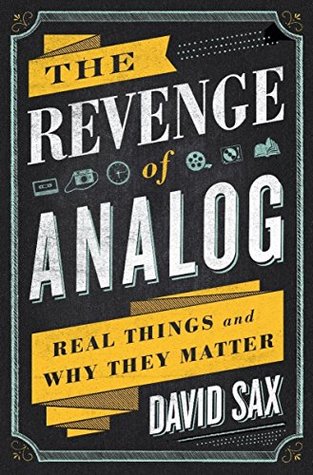More on this book
Community
Kindle Notes & Highlights
There was a richness to the vinyl record experience that transcended any quantifiable measurement. It was more fun precisely because it was less efficient.
Every day we turn around and something else has been enhanced, altered, or shaken up by digital technology: our car, our house, our job, our sex life. In the clean, orderly narrative of technological progress, the newest technology always renders the old one obsolete.
The promise of a computer reducing the cost, labor, and space associated with printing, storing, and organizing so much physical information was powerful. Office workers were called “paper pushers” for a reason, and less time pushing paper meant more time, and money, devoted to other work. Although the fully paperless office has yet to come to fruition, certain paper artifacts are now largely digital. E-mail, texts, and PDFs have taken the place of memos, telegrams, and faxes.
“This notebook,” Sebregondi said, holding up a classic black Moleskine, “is a physical experience that can leave space to the imagination. That is greater than technology.” Creativity and innovation are driven by imagination, and imagination withers when it is standardized, which is exactly what digital technology requires—codifying everything into 1’s and 0’s, within the accepted limits of software.
Antonio Marazza told me a story from a decade back, when all the designers at his firm first received Adobe’s Photoshop software. Overnight, the quality of their designs seemed to decline. After a few months of this, Landor’s Milan office gave all their designers Moleskine notebooks, and banned the use of Photoshop during the first week’s work on a project. The idea was to let their initial ideas freely blossom on paper, without the inherent bias of the software, before transferring them to the computer later for fine-tuning.
From the blurred images to the saturated filters, randomly placed shots, and even the practice of sharing your images online in social networks, the vernacular of modern smartphone photography (especially Instagram) is almost a textbook adoption of Lomography’s ten principles.
Analog solves all kinds of problems that are albatrosses to digital publishers—engagement, stickiness, discovery, etc.—and, if the order of inventions were somehow reversed, print could easily be presented as the truly disruptive technology.
The big difference is that they are able to turn perceived analog weakness into strength, and sell that as a desirable lifestyle choice to customers. This new generation of bookstores all define themselves as an enlightened, more pleasurable retail alternative to Amazon and big-box stores. They are warm, inviting, often beautiful spaces, with friendly, knowledgeable staff, refined inventory, and a sense of place. Most support local authors, hosting reading groups, book clubs, and nightly events. They take all the things Amazon sees as liabilities (physical real estate, human workers, limited
...more
A school gymnasium can last decades, a good textbook sometimes fifteen years or more. Some of the desks at my university were damn near a hundred years old. But any digital technology, no matter how well designed it is, becomes obsolete in just a few years, and inevitably stops working.
paper books are easier to navigate and personalize with notes and marks, more reliable (a textbook will not malfunction, freeze, or delete its text), less costly and more versatile (you can share books, borrow them from a library, buy them used, and sell them), and better for learning. Reading print books, taking notes on paper, even banning laptops in classes… all have been shown, and proven, to actually improve student performance
Teachers are the key to analog education’s past, present, and future, and no technology can or should replace them.
Fifteen minutes of silence a day was a life raft amid a sea of deadlines, iterations, and expectations that washed over Adobe’s workers in endless waves.
hand-drawn, ink-on-paper sketches are now the company’s standard first step in the design process.
“People who are versatile in the analog world make better digital stuff.”
sociable technology always disappoints, because it promises what it cannot deliver. “It promises friendship but can only deliver performance,”


